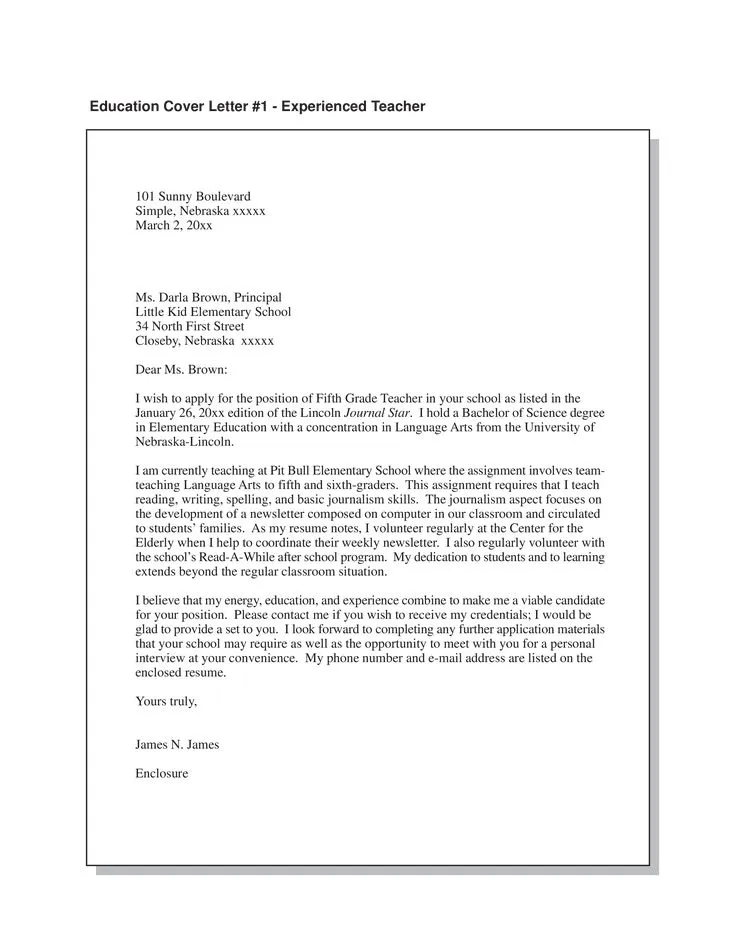Understanding the Educational Cover Letter
An educational cover letter is a crucial document in your job application, serving as your introduction to a potential employer in the education sector. Unlike a resume, which provides a factual overview of your experience and skills, a cover letter allows you to express your personality, articulate your passion for education, and demonstrate how your qualifications align with the specific requirements of the position. It provides a platform to elaborate on your experiences, showcase your teaching philosophy, and highlight what makes you a unique and valuable candidate. A well-crafted cover letter significantly increases your chances of getting noticed and securing an interview.
Why is an Educational Cover Letter Important?
The educational cover letter is not just a formality; it’s a vital tool for making a strong first impression. It allows you to personalize your application and address the employer directly. It enables you to explain any gaps in your resume or unusual career moves. The cover letter is a chance to showcase your enthusiasm for the specific role and the institution. In a competitive job market, a compelling cover letter can differentiate you from other candidates. It demonstrates your communication skills and attention to detail, crucial qualities for any educator. Ultimately, a well-written cover letter demonstrates your understanding of the position and your commitment to education, increasing your likelihood of being invited for an interview.
Key Elements of an Effective Educational Cover Letter
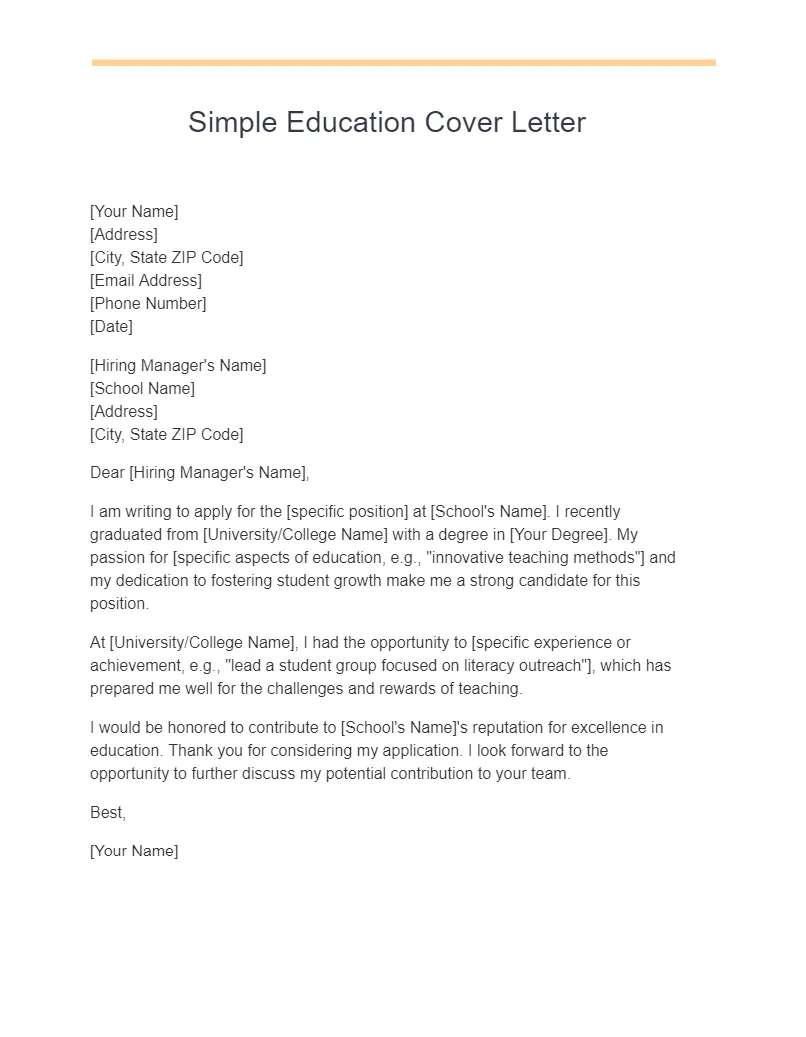
To create an effective educational cover letter, several key elements must be included. This begins with a clear and professional header, including your contact information, followed by a personalized salutation. Your opening paragraph should immediately grab the reader’s attention, stating your interest and enthusiasm for the position. The body of your letter should highlight your relevant qualifications and experience, demonstrating your skills and passion for education. You should also address the specific needs of the role and tailor your letter to each application. The letter should conclude with a call to action, expressing your interest in an interview and thanking the reader for their time and consideration. Proper proofreading and editing, as well as appropriate formatting, are also essential.
Header and Contact Information
Your header should be at the top of your cover letter and include your full name, address, phone number, and professional email address. Ensure that your email address is professional and appropriate for the educational sector. This information makes it easy for the hiring manager to contact you. Additionally, include the date and the recipient’s contact information, such as their name, title, and the school or institution’s address. This shows you’ve taken the time to research and tailor your application to the specific role and organization.
Salutation
Always address your cover letter to a specific person if possible. Research the name of the hiring manager or the principal/head of the department. Using a personalized salutation such as “Dear Mr./Ms. [Last Name]” shows that you’ve taken the initiative to learn more about the organization and the role. If you are unable to find a specific name, a professional alternative is “Dear Hiring Committee” or “Dear [Department Name] Hiring Team”. Avoid generic greetings like “To Whom It May Concern” as they can make your letter feel impersonal.
Opening Paragraph Grab Attention
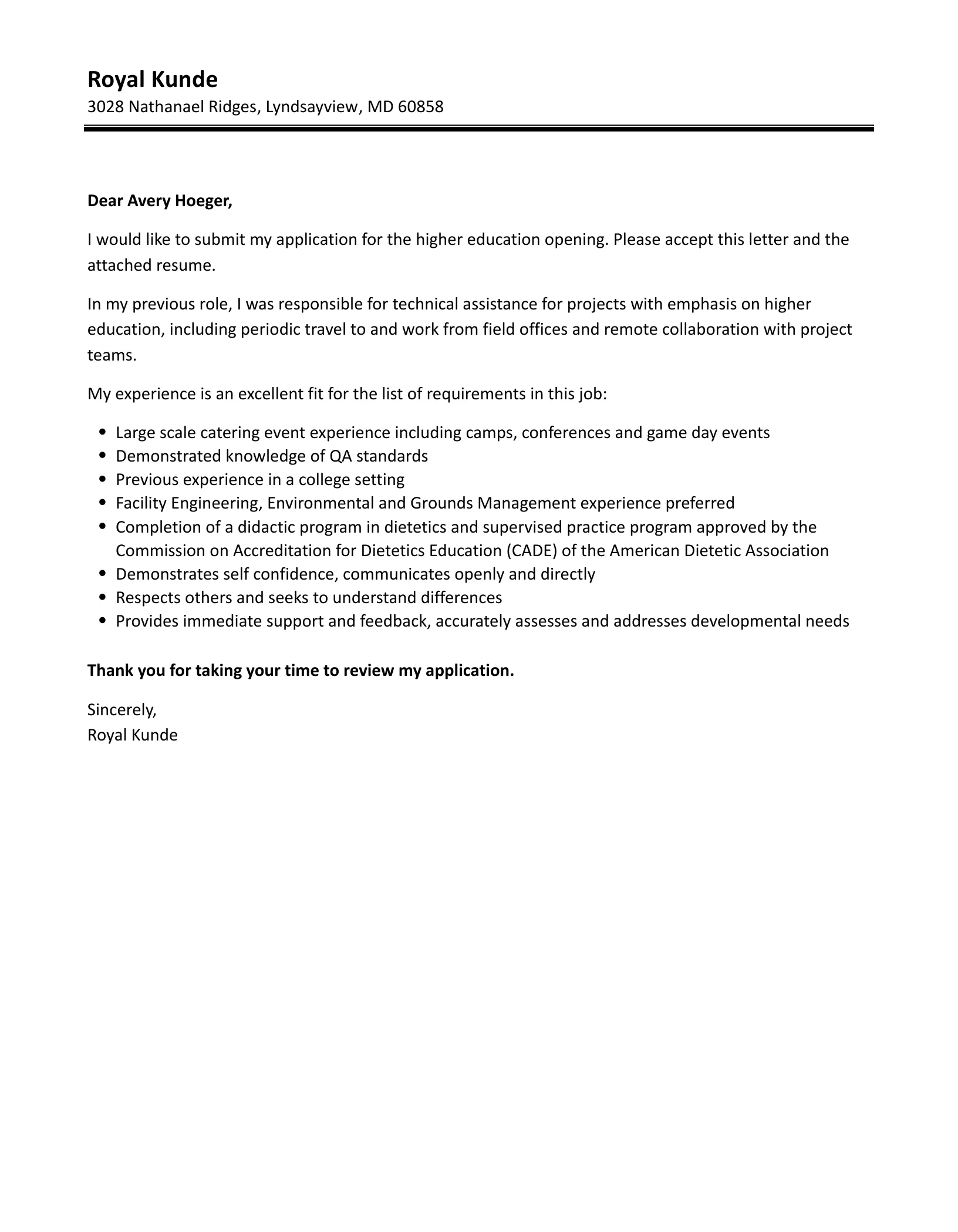
Your opening paragraph is your first chance to capture the reader’s interest. Start with a strong statement that immediately conveys your enthusiasm for the position and the school or institution. You might briefly mention where you saw the job posting and why you’re excited about the opportunity. Clearly state the position you’re applying for and a brief summary of why you believe you’re a strong candidate. Make it clear why you are interested in this specific role and what motivates you to apply. Ensure your opening is concise, engaging, and sets the tone for the rest of your letter.
Highlighting Your Qualifications and Experience
The body of your cover letter should provide detailed information about your relevant qualifications and experience. Focus on the experiences most relevant to the position you are applying for. Instead of simply listing your job duties, describe your accomplishments and results. Use specific examples to illustrate your skills and how you have made a positive impact in previous roles. Quantify your achievements whenever possible – for example, “Increased student test scores by 15%” or “Successfully implemented a new curriculum for 50 students.” Relate your qualifications directly to the requirements mentioned in the job description.
Showcasing Relevant Skills for Education
Beyond your qualifications, highlight the skills that make you an effective educator. These might include classroom management, lesson planning, curriculum development, differentiated instruction, and assessment. Mention your proficiency in using educational technologies, such as interactive whiteboards, learning management systems (LMS), or other software. If you have experience working with diverse student populations or have specific certifications relevant to the position, be sure to mention them. Tailor the skills you emphasize to match the needs of the specific school and the job description.
Demonstrating Passion for Education
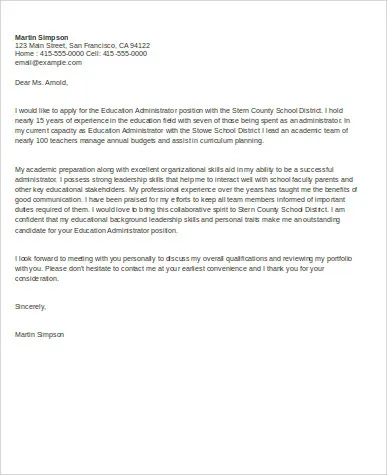
One of the most important aspects of an educational cover letter is demonstrating your passion for education. Clearly express your enthusiasm for teaching and working with students. Share your teaching philosophy and describe what motivates you to be an educator. Talk about the impact you want to make on your students’ lives, and how you foster a positive learning environment. Discuss your commitment to continuous professional development and your willingness to learn and adapt. This passion is what will set you apart from other applicants and make you a memorable candidate.
Addressing the Specific Needs of the Role
Carefully review the job description and address the specific needs and requirements of the role. Tailor your cover letter to show how your skills, experience, and qualifications align with what the employer is looking for. Research the school or institution and mention any specific initiatives or programs that resonate with you. If the job description emphasizes certain skills or experiences, make sure to highlight those areas in your cover letter. This demonstrates that you understand the position and are a good fit for the school’s culture and needs.
Tailoring Your Cover Letter for Each Application
Avoid using a generic cover letter for all applications. Tailoring your cover letter to each job is essential. This involves researching the school or institution, understanding the specific requirements of the role, and personalizing your content to address those needs. By showing that you have taken the time to understand the specific needs of the school, you demonstrate your genuine interest in the opportunity. Customize your opening paragraph, body paragraphs, and closing paragraph to reflect the specific details of the job description and the organization.
Researching the School or Institution
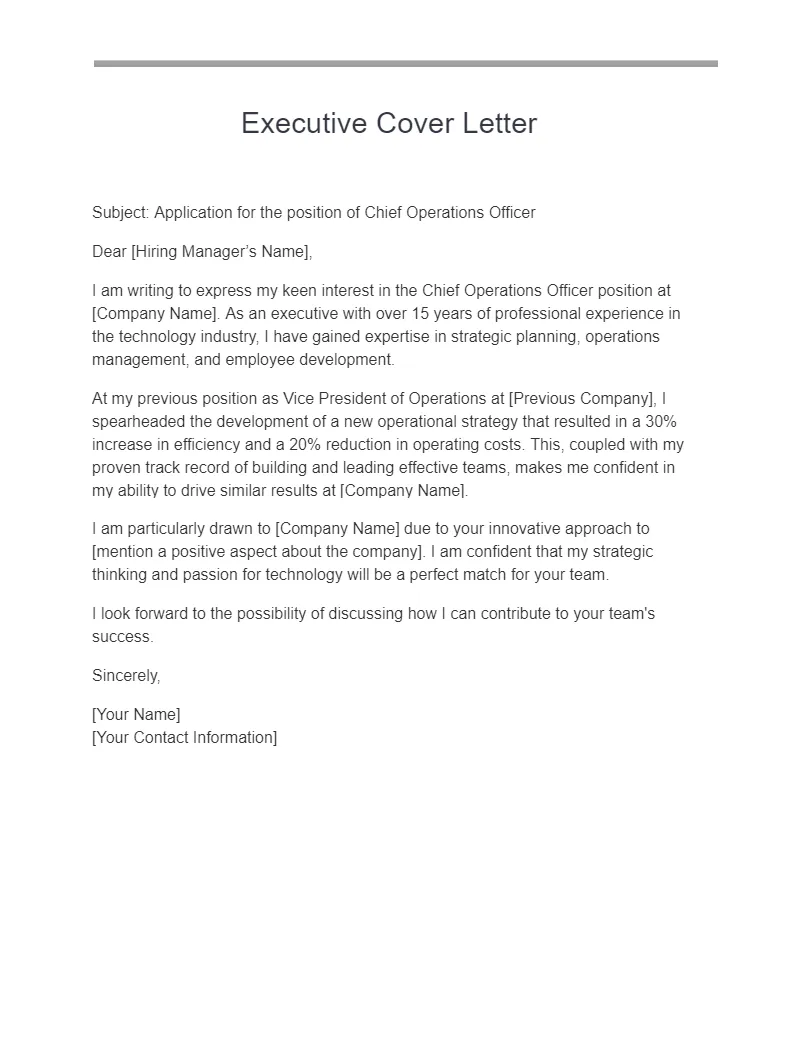
Before you start writing your cover letter, conduct thorough research about the school or institution you are applying to. Visit their website, review their mission statement, and read about their values and programs. If possible, find out about the school’s culture, such as any special events or initiatives. Understand the demographics of the student body and the school’s approach to education. Mentioning specific details in your cover letter shows that you are genuinely interested in the organization and that your values align with theirs.
Customizing Your Content
Once you have researched the school, customize the content of your cover letter to address their specific needs. Use keywords from the job description throughout your letter. Highlight the skills, experiences, and qualifications that directly align with the requirements of the position. If the school emphasizes a particular teaching philosophy or approach, incorporate that into your letter. Customizing your content ensures that your cover letter stands out and demonstrates your understanding of the role and the institution.
Structuring Your Cover Letter
A well-structured cover letter is easy to read and makes a positive impression. Your cover letter should be concise and organized, typically no more than one page long. Use clear and concise language, and avoid jargon. The paragraphs should be well-defined, with each paragraph focusing on a specific idea or point. Use headings and subheadings, if appropriate, to break up the text and improve readability. Proper formatting, including font choice and spacing, is also critical in presenting a professional image.
Body Paragraphs
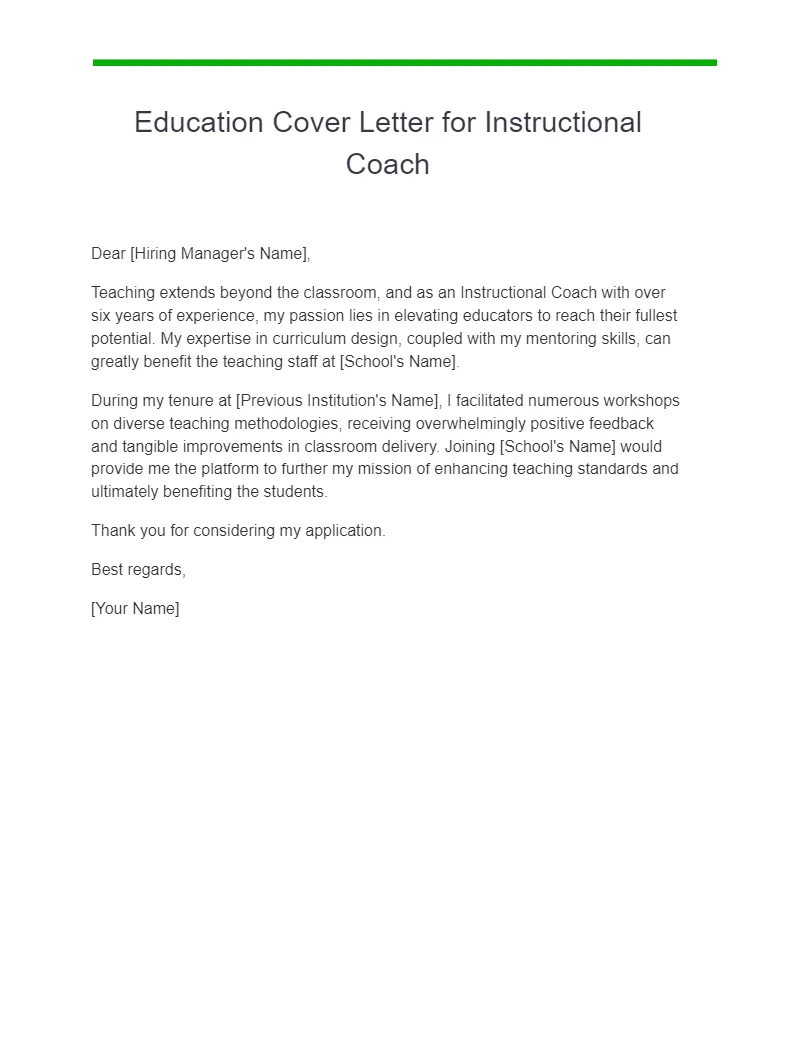
The body paragraphs are the core of your cover letter, where you provide detailed information about your qualifications and experience. Each body paragraph should focus on a specific point or skill. Use the STAR method (Situation, Task, Action, Result) to describe your experiences. Provide concrete examples of your achievements and quantifiable results whenever possible. Connect your experience and skills to the requirements of the job description and demonstrate how you can contribute to the school or institution. Keep your paragraphs focused, concise, and engaging, using action verbs to make your points more impactful.
Closing Paragraph Call to Action
Your closing paragraph should reiterate your interest in the position and express your enthusiasm for an interview. Thank the hiring manager for their time and consideration. Reiterate your contact information if desired. End with a professional closing, such as “Sincerely” or “Best regards,” followed by your name. A strong closing leaves a lasting impression and encourages the employer to take the next step in the hiring process.
Proofreading and Editing Your Cover Letter
Proofreading and editing your cover letter is critical to ensure it is free of errors. Mistakes in grammar, spelling, or punctuation can undermine your credibility and make a negative impression on the hiring manager. Always proofread your cover letter multiple times, paying attention to detail. It is recommended to have someone else review your cover letter as well, as a fresh pair of eyes can often catch errors you might have missed. Ensure the letter is well-organized, clearly written, and free of typos or grammatical errors.
Common Mistakes to Avoid
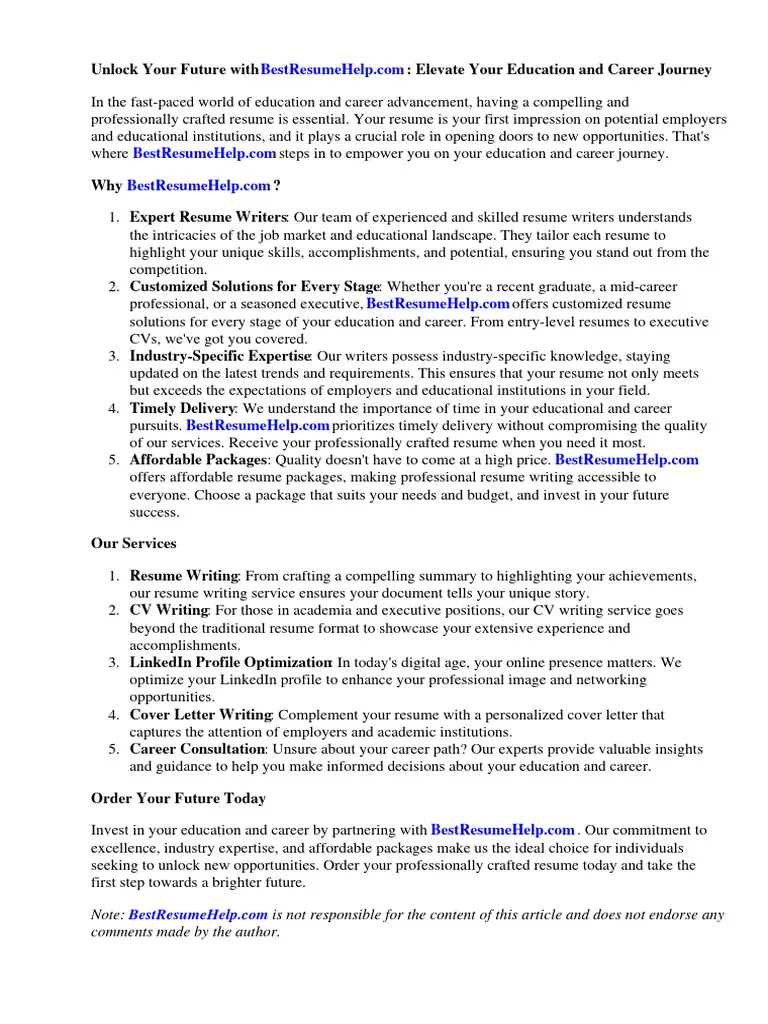
There are several common mistakes that can hurt your chances of getting an interview. Avoid using generic cover letters and always tailor your letter to the specific job and school. Do not repeat your resume; instead, elaborate on your experiences and provide examples. Avoid using overly formal or informal language. Be sure to avoid errors in grammar, spelling, and punctuation. Do not be negative or critical of previous employers, and never include sensitive information such as your salary expectations unless specifically requested. Ensure you don’t submit a letter that is too long or rambling.
Formatting and Presentation Tips
Proper formatting and presentation can significantly improve the readability of your cover letter. Use a professional font, such as Times New Roman, Arial, or Calibri, with a font size between 10 and 12 points. Use clear and consistent formatting throughout the document, including appropriate spacing between paragraphs and sections. Make sure the cover letter is well-organized with clear headings and subheadings. Avoid using excessive colors, graphics, or complex layouts that might distract from the content. Ensure the letter is easy to read and visually appealing.
Using Action Verbs Effectively
Using action verbs effectively is essential to make your cover letter more impactful. Action verbs help you to describe your accomplishments and skills in a dynamic and engaging way. Instead of saying “Responsible for,” use verbs like “Managed,” “Developed,” “Implemented,” “Led,” or “Achieved.” Start each bullet point or sentence describing an achievement with a strong action verb. This makes your letter more dynamic and shows your impact. Use a variety of action verbs to avoid repetition and keep your writing fresh and engaging.
Examples of Strong Educational Cover Letters
Review examples of strong educational cover letters to gain inspiration and guidance. Look for examples that demonstrate the key elements of an effective cover letter, such as a compelling opening paragraph, clear presentation of qualifications, and a strong closing. Analyze how the authors use action verbs, highlight relevant skills, and tailor their letters to specific roles. You can find examples online or seek feedback from career counselors or education professionals. Use these examples as a starting point and tailor your letter to reflect your own unique experiences, skills, and passion.
By following these guidelines, you can create an outstanding educational cover letter that highlights your qualifications and increases your chances of landing your dream job in education. Good luck with your job search!
